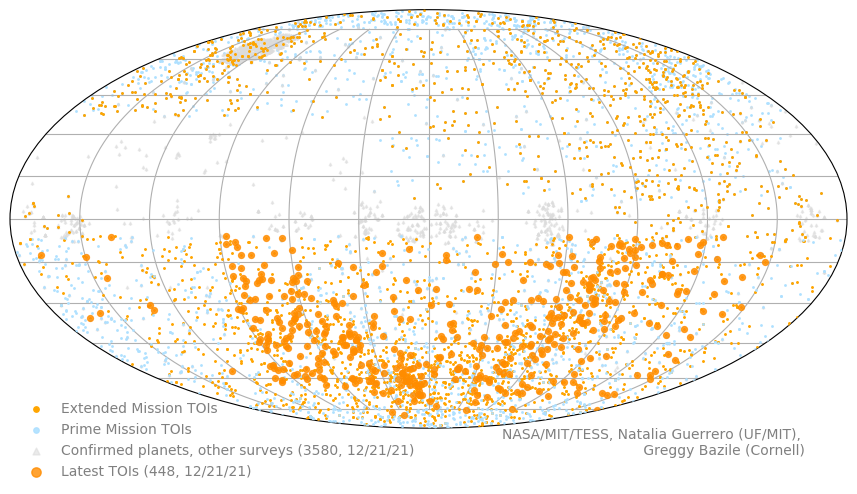The catalog of planet candidates found with NASA’s Transiting Exoplanet Survey Satellite (TESS) recently passed 5,000 TOIs, or TESS Objects of Interest.
The catalog has been growing steadily since the start of the mission in 2018, and the batch of TOIs boosting the catalog to over 5,000 come mostly from the Faint Star Search led by MIT postdoc Michelle Kunimoto.
Kunimoto reflects, “This time last year, TESS had found just over 2,400 TOIs. Today, TESS has reached more than twice that number — a huge testament to the mission and all the teams scouring the data for new planets. I’m excited to see thousands more in the years to come!”
Now in its extended mission, TESS is observing the Northern Hemisphere and ecliptic plane, including regions of the sky previously observed by the Kepler and K2 missions. The TOIs added in late December are from the third year of the TESS mission, which ran from July 2020 to June 2021. TESS re-observed the sky visible in the Earth’s Southern Hemisphere, revisiting stars it had first observed at the mission’s start in 2018.
TOI manager Katharine Hesse remarks, “With data from the first year of the extended mission, we have found dozens of additional candidates to TOIs found during the prime mission. I am excited to see how many multi-planet systems we can find during the rest of the extended mission and in upcoming years with TESS.” Planned extensions of the TESS mission to 2025 and beyond should unveil many more new planet candidates.
Discovering more planet candidates and adding them to the TESS Objects of Interest Catalog is the first step. In the coming months, astronomers around the world will study each of these TOIs to confirm whether they are bona fide planets, and the catalog of confirmed exoplanets from the TESS mission (175 as of Dec. 20) will continue to grow.
TESS is a NASA Astrophysics Explorer mission led and operated by MIT in Cambridge, Massachusetts, and managed by NASA’s Goddard Space Flight Center. Additional partners include Northrop Grumman, based in Falls Church, Virginia; NASA’s Ames Research Center in California’s Silicon Valley; the Center for Astrophysics | Harvard and Smithsonian in Cambridge, Massachusetts; MIT’s Lincoln Laboratory; and the Space Telescope Science Institute in Baltimore. More than a dozen universities, research institutes, and observatories worldwide are participants in the mission.











